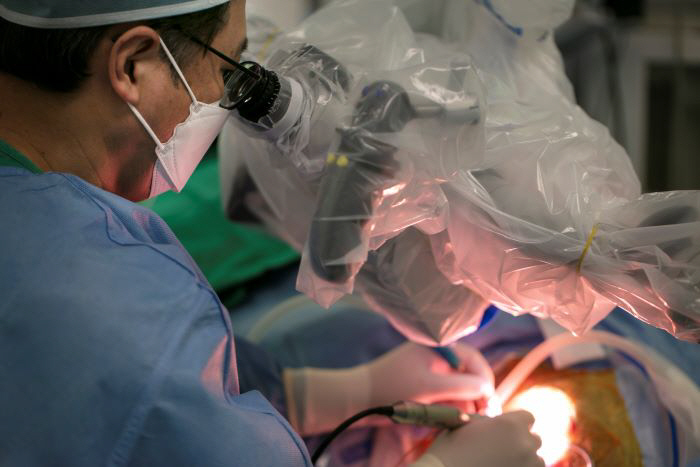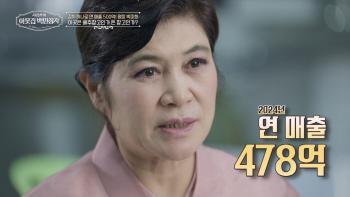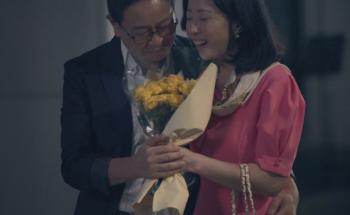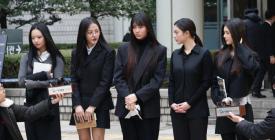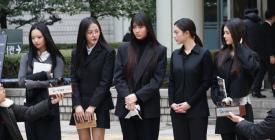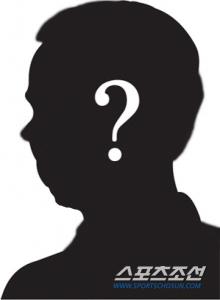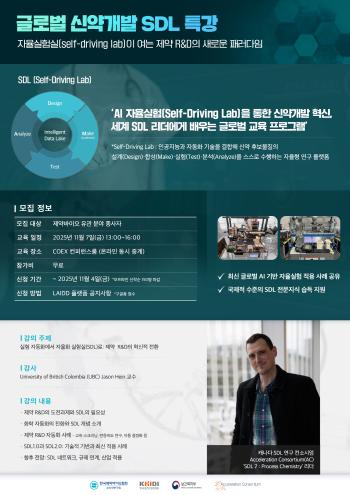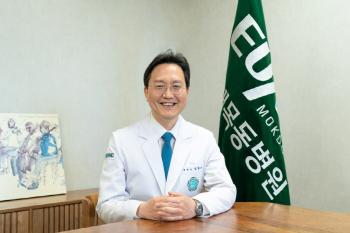Severance Hospital Achieves 3,000 Hearing Implant Surgery...37 years ago, teachers collected their salaries to buy equipment
Jun 24, 2025
Severance Hospital recently achieved 3,000 cases of auditory implant surgery.
The process by which a person hears sounds goes through the outer ear (outside the ear), the middle ear (echoic and ectopic bones), and the inner ear (snail duct). The outer ear collects sound waves in the form of vibrations in the air, and the iso bone, which refers to the three small bones located in the middle lumen, amplifies the sound waves and moves them to the cochlea. When the lymph fluid inside the cochlea vibrates, the hair cells in the corticotrachea generate an electrical signal. When an electrical signal is transmitted to the brain through the auditory nerve, the brain interprets the signal and recognizes it as sound.
◇Succeeded in artificial wow surgery for the first time in Korea...In 2019, 2,000 cases were implemented
Deafness that does not hear the sound is divided into pre-negative hearing loss, which causes problems in the outer ear and middle ear, and sensory nerve hearing loss caused by problems in the inner ear. Electronic hearing loss usually wears hearing aids because external sound vibration can be increased. Mild or moderate sensory nerve hearing loss is capable of hearing rehabilitation to some extent, but if high hearing loss occurs due to a hair cell or auditory nerve abnormality in the cochlea, it is difficult to properly recognize it as a speech sound no matter how loud it is.
At this time, the device that replaces the process of converting sound waves into electrical signals to correct hearing loss is the artificial wau. Among artificial woo devices, a bill processor outside the ear converts external sound into digital signals and delivers them to implants in the body. Implants convert signals into electrical stimulation and transmit them to the cochlea, and the auditory nerve sends them to the brain to clearly understand the sound of speech.
In addition to artificial wows, there are various auditory implants that can restore hearing. Various auditory implant surgeries have been developed depending on the cause and degree of hearing loss, such as artificial middle ear that stimulates the ear bone directly to hear clearer and more natural sounds than hearing aids when there is moderate sensory nerve hearing loss or conductive hearing loss, bone conduction implants that transmit sound stimulation to the cochlea through the skull bone without going through the ear when there is an abnormality in the outer ear or middle ear, and auditory brain stem transplantation that puts the implant directly into the brain when there is no auditory nerve itself or is damaged.
In Korea, Kim Hee-nam, the late professor of otolaryngology at Severance Hospital, succeeded in artificial wow surgery for the first time on October 11, 1988. At that time, the price of artificial wow equipment was close to $20,000. With the support of the 19th Yonsei University dean Lee Yoo-bok and the salary collected by otolaryngology teachers, the first machine was purchased and the surgery was carried out. Since then, it has led surgery for hearing loss by achieving 1,000 and 2000 cases in 2013 and 2019, respectively.
◇ 40% of artificial middle ear procedures in Korea...Patient-customized precision medical care
In addition to artificial wows, Severance Hospital has a variety of first-time titles. Lee Won-sang and Choi Jae-young performed the first Cheongseong brain stem transplant in Korea in 2008. Cheongseong brain stem transplantation is a high-level surgery that is limited in hospitals that can be performed as it is accompanied by brain surgery. In 2011, Professor Choi Jae-young started artificial middle ear surgery for the first time in Korea and provided an optimal hearing solution for patients with hearing loss who have difficulty wearing hearing aids. Since 2014, Professor Moon In-seok and others have published more than 10 articles in excellent international journals as a result of research on finding the optimal artificial middle ear indication.
Among the 3,000 cases achieved this time, artificial wows, artificial middle ear, bone conduction implants, and Cheongseong brain stem transplants were 2376, 408, 190, and 26, respectively. Currently, the number of artificial middle ear procedures in Korea is about 1,000, and Severance Hospital has performed about 40% of them.
Precision medicine is the biggest difference in the treatment of hearing loss at Severance Hospital.
Professor Jeong Jin-se has been analyzing genetic information on more than 3,500 patients with hearing loss over the past 15 years and conducting patient-specific precision medical care in the treatment process from diagnosis to prognosis. Typically, implants and drugs are combined to enhance the effectiveness of treatment. Hearing recovery and improvement of tinnitus were confirmed through treatment of rapamycin and anakinra in patients with OSBPL2 and NLRP3 gene mutations. Professor Jeong Jin-se, along with Professor Choi Jae-young, developed and transferred targeted drug treatments in patients with Pendrin and KCNQ4 gene mutation hearing loss.
◇Continuous rehabilitation after hearing implant procedures is important
Rehabilitation process is essential after hearing implant procedure. This is because even after surgery, there are still restrictions on hearing a wide range of sounds, and mapping is needed to adjust the frequency and range of sounds that patients who have undergone surgery accept comfortably. Severance Hospital's otolaryngology increased the success rate of surgery through multidisciplinary treatment with various medical departments before surgery, and established a systematic treatment system of 'One Team' with the auditory laboratory, auditory language therapy room, social work team, and the Haenim Precision Medical Center for patient-specific hearing rehabilitation.
In addition, Severance Hospital has been operating 'Dream Classroom' to help children with artificial wow surgery recover their hearing and rehabilitate their society since September 2012. The Dream Product Class is sponsored by KT and boasts a long history among corporate social contribution activities.
In the dream room, various programs such as music, art, and English classes as well as language therapy are held, and through continuous rehabilitation and socialization experiences after surgery, surgical children can grow into healthy members of society.
In addition, Severance Hospital passed on its know-how to operate dream classes across the country, including Jeollanam-do, Jeju, and Gyeongbuk. It is also taking the lead in recovering hearing and adapting to society for overseas patients beyond Korea. In 2019, the second dream class was opened in Cambodia, where the auditory rehabilitation system was insufficient, and the first auditory rehabilitation program for deaf children was introduced and operated in the country.
Professor Choi Jae-young said, `Severance Hospital has overcome the obstacle of hearing loss by driving breakthrough technological progress over the past 40 years""The strength of Severance in the treatment of hearing loss is to take an integrated approach, such as genetic factor analysis, treatment in connection with tumors, and combination of drugs and surgery.""
The process by which a person hears sounds goes through the outer ear (outside the ear), the middle ear (echoic and ectopic bones), and the inner ear (snail duct). The outer ear collects sound waves in the form of vibrations in the air, and the iso bone, which refers to the three small bones located in the middle lumen, amplifies the sound waves and moves them to the cochlea. When the lymph fluid inside the cochlea vibrates, the hair cells in the corticotrachea generate an electrical signal. When an electrical signal is transmitted to the brain through the auditory nerve, the brain interprets the signal and recognizes it as sound.
◇Succeeded in artificial wow surgery for the first time in Korea...In 2019, 2,000 cases were implemented
Deafness that does not hear the sound is divided into pre-negative hearing loss, which causes problems in the outer ear and middle ear, and sensory nerve hearing loss caused by problems in the inner ear. Electronic hearing loss usually wears hearing aids because external sound vibration can be increased. Mild or moderate sensory nerve hearing loss is capable of hearing rehabilitation to some extent, but if high hearing loss occurs due to a hair cell or auditory nerve abnormality in the cochlea, it is difficult to properly recognize it as a speech sound no matter how loud it is.
At this time, the device that replaces the process of converting sound waves into electrical signals to correct hearing loss is the artificial wau. Among artificial woo devices, a bill processor outside the ear converts external sound into digital signals and delivers them to implants in the body. Implants convert signals into electrical stimulation and transmit them to the cochlea, and the auditory nerve sends them to the brain to clearly understand the sound of speech.
In addition to artificial wows, there are various auditory implants that can restore hearing. Various auditory implant surgeries have been developed depending on the cause and degree of hearing loss, such as artificial middle ear that stimulates the ear bone directly to hear clearer and more natural sounds than hearing aids when there is moderate sensory nerve hearing loss or conductive hearing loss, bone conduction implants that transmit sound stimulation to the cochlea through the skull bone without going through the ear when there is an abnormality in the outer ear or middle ear, and auditory brain stem transplantation that puts the implant directly into the brain when there is no auditory nerve itself or is damaged.
In Korea, Kim Hee-nam, the late professor of otolaryngology at Severance Hospital, succeeded in artificial wow surgery for the first time on October 11, 1988. At that time, the price of artificial wow equipment was close to $20,000. With the support of the 19th Yonsei University dean Lee Yoo-bok and the salary collected by otolaryngology teachers, the first machine was purchased and the surgery was carried out. Since then, it has led surgery for hearing loss by achieving 1,000 and 2000 cases in 2013 and 2019, respectively.
◇ 40% of artificial middle ear procedures in Korea...Patient-customized precision medical care
In addition to artificial wows, Severance Hospital has a variety of first-time titles. Lee Won-sang and Choi Jae-young performed the first Cheongseong brain stem transplant in Korea in 2008. Cheongseong brain stem transplantation is a high-level surgery that is limited in hospitals that can be performed as it is accompanied by brain surgery. In 2011, Professor Choi Jae-young started artificial middle ear surgery for the first time in Korea and provided an optimal hearing solution for patients with hearing loss who have difficulty wearing hearing aids. Since 2014, Professor Moon In-seok and others have published more than 10 articles in excellent international journals as a result of research on finding the optimal artificial middle ear indication.
Among the 3,000 cases achieved this time, artificial wows, artificial middle ear, bone conduction implants, and Cheongseong brain stem transplants were 2376, 408, 190, and 26, respectively. Currently, the number of artificial middle ear procedures in Korea is about 1,000, and Severance Hospital has performed about 40% of them.
Precision medicine is the biggest difference in the treatment of hearing loss at Severance Hospital.
Professor Jeong Jin-se has been analyzing genetic information on more than 3,500 patients with hearing loss over the past 15 years and conducting patient-specific precision medical care in the treatment process from diagnosis to prognosis. Typically, implants and drugs are combined to enhance the effectiveness of treatment. Hearing recovery and improvement of tinnitus were confirmed through treatment of rapamycin and anakinra in patients with OSBPL2 and NLRP3 gene mutations. Professor Jeong Jin-se, along with Professor Choi Jae-young, developed and transferred targeted drug treatments in patients with Pendrin and KCNQ4 gene mutation hearing loss.
◇Continuous rehabilitation after hearing implant procedures is important
Rehabilitation process is essential after hearing implant procedure. This is because even after surgery, there are still restrictions on hearing a wide range of sounds, and mapping is needed to adjust the frequency and range of sounds that patients who have undergone surgery accept comfortably. Severance Hospital's otolaryngology increased the success rate of surgery through multidisciplinary treatment with various medical departments before surgery, and established a systematic treatment system of 'One Team' with the auditory laboratory, auditory language therapy room, social work team, and the Haenim Precision Medical Center for patient-specific hearing rehabilitation.
In addition, Severance Hospital has been operating 'Dream Classroom' to help children with artificial wow surgery recover their hearing and rehabilitate their society since September 2012. The Dream Product Class is sponsored by KT and boasts a long history among corporate social contribution activities.
In the dream room, various programs such as music, art, and English classes as well as language therapy are held, and through continuous rehabilitation and socialization experiences after surgery, surgical children can grow into healthy members of society.
In addition, Severance Hospital passed on its know-how to operate dream classes across the country, including Jeollanam-do, Jeju, and Gyeongbuk. It is also taking the lead in recovering hearing and adapting to society for overseas patients beyond Korea. In 2019, the second dream class was opened in Cambodia, where the auditory rehabilitation system was insufficient, and the first auditory rehabilitation program for deaf children was introduced and operated in the country.
Professor Choi Jae-young said, `Severance Hospital has overcome the obstacle of hearing loss by driving breakthrough technological progress over the past 40 years""The strength of Severance in the treatment of hearing loss is to take an integrated approach, such as genetic factor analysis, treatment in connection with tumors, and combination of drugs and surgery.""
|
This article was translated by Naver AI translator.
